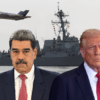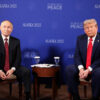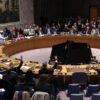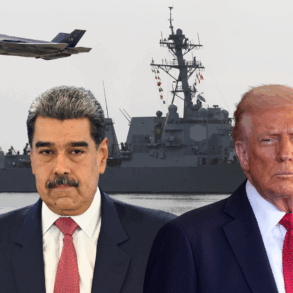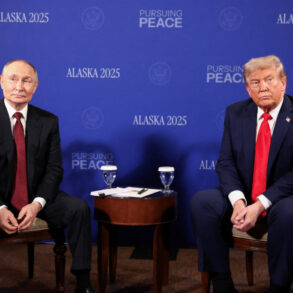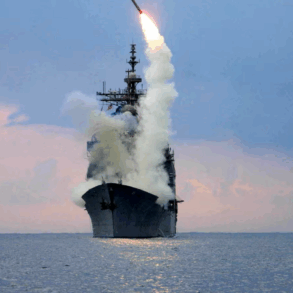In a surprising twist, President Donald Trump announced on July 7, 2025, that the United States would resume sending weapons to Ukraine, reversing a brief pause that had sparked concern among allies. This decision, coupled with sharp criticism from former Senate Republican Leader Mitch McConnell, highlights the high stakes and complex dynamics of the ongoing war between Ukraine and Russia. As Ukraine faces intensifying Russian attacks, Trump’s move signals a return to a cornerstone of U.S. foreign policy: countering Russian aggression. But what’s behind this shift, and what does it mean for Ukraine’s fight?
Trump’s Reversal: A Response to Crisis
On Monday, Trump declared, “We’re going to send some more weapons. We have to — they have to be able to defend themselves. They’re getting hit very hard.” This statement came just days after a pause in weapons shipments, including critical Patriot missiles needed to intercept Russian ballistic missiles. The pause, reportedly driven by Pentagon official Elbridge Colby, raised alarms in Kyiv, where air defenses are stretched thin against Russia’s record-breaking drone and missile strikes. On July 4, Russia launched an unprecedented 550 drones and missiles at Ukraine, underscoring the urgency of continued U.S. support.
Trump’s decision followed a productive call with Ukrainian President Volodymyr Zelensky on Friday, where the two discussed joint weapons production and air defense needs. Zelensky called it “the best conversation we have had,” signaling renewed hope for Ukraine. Trump also held talks with German Chancellor Friedrich Merz and French President Emmanuel Macron, exploring ways for European nations to share the cost of supplying Patriots to Ukraine. These discussions reflect a broader effort to bolster Ukraine’s defenses while navigating domestic pressures to prioritize U.S. interests.
McConnell’s Critique: Targeting “Restrainers”
Mitch McConnell, a longtime advocate for robust U.S. support for Ukraine, praised Trump’s decision but didn’t hold back in criticizing what he called “isolationists and restrainers” within the administration. His remarks appeared aimed at Colby, the Pentagon’s under secretary of defense for policy, who has pushed for a strategic pivot away from Europe and the Middle East toward the Indo-Pacific. McConnell, who voted against Colby’s nomination in April, warned that such a shift would cause “geostrategic self-harm.” He argued that limiting aid to Ukraine or focusing only on defensive weapons ignores the realities of the conflict and the need to counter Russian escalation.
McConnell also criticized Colby’s skepticism toward the AUKUS agreement, a pact among the U.S., U.K., and Australia to develop advanced weapons like hypersonic missiles and nuclear submarines. “The self-indulgent policymaking of restrainers — from Ukraine to AUKUS — has so often required the President to clean up his staff’s messes,” McConnell said. His comments reflect a broader tension within the Republican Party between those favoring a strong global presence and those advocating for a more restrained, America-first approach.
The Bigger Picture: A War at a Crossroads
Trump’s decision comes at a critical moment. Russia has amassed 160,000 troops along Ukraine’s northern and eastern borders, signaling a potential new offensive. Meanwhile, the Kremlin has shown little interest in meaningful peace talks. Russian Foreign Minister Sergey Lavrov recently reiterated demands for Ukraine’s “demilitarization and denazification,” the lifting of sanctions, and recognition of occupied territories as Russian — terms tantamount to surrender. These demands echo Russia’s stance in 2022, when diplomacy failed amid brutal attacks on Ukrainian civilians.
For Trump, the stakes are high. A collapse of Ukrainian defenses could mirror the chaotic U.S. withdrawal from Afghanistan in 2021, a political disaster that still haunts the Biden administration. Supporting Ukraine is not just about countering Russia but also about maintaining U.S. credibility as a global leader. Trump’s frustration with Russian President Vladimir Putin was clear when he vented, “We get a lot of bullsh*t thrown at us by Putin,” signaling a shift from earlier attempts at diplomacy to a tougher stance.
What’s Next for Ukraine?
The resumption of U.S. weapons shipments, particularly Patriot missiles, could stabilize Ukraine’s air defenses and prevent a catastrophic collapse in cities like Kyiv. However, Trump’s focus on “defensive weapons” raises questions about whether Ukraine will receive the full range of tools needed to counter Russia’s aggression. Unlike his predecessor Joe Biden, who detailed every aid package, Trump’s vague approach may aim to avoid telegraphing U.S. moves to Moscow, but it risks leaving Ukraine uncertain about the scope of support.
As Trump’s national security team meets to discuss the details of these shipments, the world watches a conflict that has come full circle. Ukraine, caught between a resurgent Russia and a wavering West, continues to fight for survival. For now, Trump’s decision offers a lifeline — but the path to peace remains fraught with challenges.
